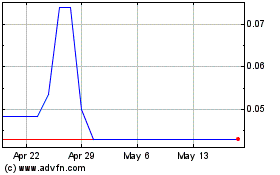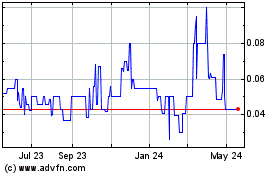Mutual Fund Summary Prospectus (497k)
01 February 2014 - 8:34AM
Edgar (US Regulatory)
|
SUPPLEMENT TO THE CURRENTLY EFFECTIVE SUMMARY PROSPECTUS
|
|
|
|
|
|
|
|
|
|
DWS Equity Dividend Fund
|
The following changes are effective on or about April 1, 2014.
All disclosure and references in the fund’s summary prospectus to ”Real estate securities risk” and ”Emerging markets risk” are hereby deleted.
The following information replaces the existing disclosure contained under the ”PRINCIPAL INVESTMENT STRATEGY” section within the fund’s summary prospectus.
Main investments.
Under normal circumstances, the fund invests at least 80% of net assets, plus the amount of any borrowings for investment purposes, in dividend–paying equity securities (mainly common stocks). Equity securities may also include preferred stocks, depository receipts and other securities with equity characteristics, such as convertible securities and warrants. The fund focuses on stocks of large US companies that are similar in size to the companies in the S&P 500 Index and that portfolio management believes are undervalued. As of January 31, 2013, the index had a median market capitalization of $13.5 billion.
Although the fund can invest in stocks of any economic sector (which is comprised of two or more industries), at times it may emphasize one or more sectors and may invest more than 25% of total assets in a single sector. The fund may invest up to 20% of total assets in foreign securities.
Management process.
Portfolio management intends to select approximately forty stocks with the lowest positive Cash Return on Capital Invested (CROCI
®
) Economic Price Earnings Ratio while seeking above average dividend yield. The CROCI
®
Economic Price Earnings Ratio (CROCI
®
Economic P/E Ratio) is a proprietary measure of company valuation using the same relationship between valuation and return as an accounting P/E ratio (i.e. price/book value divided by return on equity). It is a US-specific strategy seeking to select approximately the forty best value companies from the S&P 500
®
Index (excluding financial companies) with additional screening on high dividend yield, dividend sustainability and price volatility. At times, the number of stocks held in the fund may differ from forty stocks as a result of corporate actions, mergers or other events.
The fund is reconstituted on a quarterly basis in accordance with the strategy’s rules (re-selecting approximately forty stocks that will make up the fund.) The strategy targets low valuation combined with higher dividends and excludes stocks with the highest financial leverage, lowest cash returns and highest volatility which are calculated and supplied by the CROCI
®
Investment Strategy and Valuation Group, a unit within Deutsche Asset & Wealth Management, through a licensing agreement with the fund’s Advisor. By excluding these stocks, the selection methodology aims to reduce the impact to performance from owning stocks with high dividends where the dividend is potentially at risk while still targeting a strong tilt towards value and an above average dividend yield. The strategy also utilizes two systematic turnover control buffers to minimize turnover impact from transaction costs. The Dividend Yield buffer seeks to reduce portfolio turnover by not replacing a portfolio security that passes all of the sustainability screens and still has a dividend yield that exceeds thresholds determined by portfolio management from time to time. The Economic P/E buffer seeks to reduce turnover by limiting the replacement of a portfolio security to when its Economic P/E ratio exceeds thresholds determined by portfolio management from time to time. Portfolio management will take additional measures to attempt to reduce portfolio turnover, market impact and transaction costs in connection with implementation of the strategy, by applying liquidity controls and managing the portfolio with tax efficiency in mind.
Derivatives.
Portfolio management generally may use futures contracts, which are a type of derivative (a contract whose value is based on, for example, indices, currencies or securities) as a substitute for direct investment in a particular asset class or to keep cash on hand to meet shareholder redemptions. In addition, portfolio management generally may use forward currency contracts to hedge the fund’s exposure to changes in foreign currency exchange rates on its foreign currency denominated portfolio holdings or to facilitate transactions in foreign currency denominated securities. Portfolio management generally may use structured notes to gain exposure to certain foreign markets that may not permit direct investment.
The fund may also use various types of derivatives (i) for hedging purposes; (ii) for risk management; (iii) for non-hedging purposes to seek to enhance potential gains; or (iv) as a substitute for direct investment in a particular asset class or to keep cash on hand to meet shareholder redemptions.
Securities Lending.
The fund may lend securities (up to one–third of total assets) to approved institutions.
|
January 31, 2014
PROSTKR-326
|
The following disclosure is added under the ”MAIN RISKS” section within the fund’s summary prospectus.
CROCI
®
risk.
The fund will be managed on the premise that stocks with lower CROCI
®
Economic P/E Ratios may outperform stocks with higher CROCI
®
Economic P/E Ratios over time. This premise may not always be correct and prospective investors should evaluate this assumption prior to investing in the fund.
The calculation of the CROCI
®
Economic P/E Ratio is determined by the CROCI
®
Investment Strategy and Valuation Group using publicly available information. This publicly available information is adjusted on assumptions made by the CROCI
®
Investment Strategy and Valuation Group that, subsequently, may prove not to have been correct. As CROCI
®
Economic P/E Ratios are calculated using historical information, there can be no guarantee of the future performance of the CROCI
®
strategy.
The following information replaces the existing disclosure contained under the ”PAST PERFORMANCE” section within the fund’s summary prospectus.
How a fund’s returns vary from year to year can give an idea of its risk; so can comparing fund performance to overall market performance (as measured by an appropriate market index). Past performance may not indicate future results. All performance figures below assume that dividends were reinvested. For more recent performance figures, go to www.dws-investments.com (the Web site does not form a part of this prospectus) or call the phone number included in this prospectus.
For Class R shares, historical performance prior to class inception is based on the performance of the fund’s original share class (Class A) adjusted to reflect the higher expenses of Class R.
Prior to the implementation date of the changes described herein, the fund had a different investment management team that operated with a different investment strategy. Performance would have been different if the investment strategy described above had been in effect.
The following information replaces the existing disclosure contained under the ”AVERAGE ANNUAL TOTAL RETURNS” sub–heading of the ”PAST PERFORMANCE” section within the fund’s summary prospectus.
AVERAGE ANNUAL TOTAL RETURNS
(For periods ended 12/31/2012 expressed as a %)
After–tax returns (which are shown only for Class A and would be different for other classes) reflect the historical highest individual federal income tax rates, but do not reflect any state or local taxes. Your actual after–tax returns may be different. After–tax returns are not relevant to shares held in an IRA, 401(k) or other tax–advantaged investment plan. Class S index comparison began on 2/28/05.
|
|
Class
Inception
|
1
Year
|
5
Years
|
10
Years
|
|
Class A
before tax
|
3/18/1988
|
5.53
|
-4.85
|
3.81
|
|
After tax on distributions
|
|
5.15
|
-5.16
|
3.32
|
|
After tax on distributions and sale of fund shares
|
|
4.06
|
-4.08
|
3.27
|
|
Class B
before tax
|
9/11/1995
|
8.10
|
-4.69
|
3.57
|
|
Class C
before tax
|
9/11/1995
|
11.14
|
-4.44
|
3.64
|
|
Class R
before tax
|
10/1/2003
|
11.67
|
-4.02
|
4.13
|
|
INST Class
before tax
|
8/19/2002
|
12.38
|
-3.36
|
4.79
|
|
Standard & Poor’s 500 Index (S&P 500)
(reflects no deduction for fees, expenses or taxes)
|
|
16.00
|
1.66
|
4.36
|
|
S&P High Yield Dividend Aristocrats
®
Index
(reflects no deduction for fees, expenses or taxes)
|
|
11.88
|
5.19
|
—
|
|
|
Class
Inception
|
1
Year
|
5
Years
|
Since
Inception
|
|
Class S
before tax
|
2/28/2005
|
12.22
|
-3.54
|
0.30
|
|
Standard & Poor’s 500 Index (S&P 500)
(reflects no deduction for fees, expenses or taxes)
|
|
16.00
|
1.66
|
4.36
|
|
S&P High Yield Dividend Aristocrats
®
Index
(reflects no deduction for fees, expenses or taxes)
|
|
11.88
|
5.19
|
—
|
The Advisor believes that the S&P 500 Index generally represents the fund’s overall asset allocations excluding financial companies. The Advisor believes the additional S&P High Yield Dividend Aristocrats
®
Index, which was first calculated on 9/15/06, reflects the different components of the fund’s typical asset allocations with a similar focus on dividends.
|
January 31, 2014
PROSTKR-326
|
The following information replaces the existing disclosure contained under the ”Portfolio Manager(s)” sub–heading of the ”MANAGEMENT” section within the fund’s summary prospectus.
Di Kumble, CFA, Managing Director.
Portfolio Manager of the fund. Began managing the fund in 2014.
Please Retain This Supplement for Future Reference
January 31, 2014
PROSTKR-326
3
Reliability (PK) (USOTC:RLBY)
Historical Stock Chart
From Jun 2024 to Jul 2024

Reliability (PK) (USOTC:RLBY)
Historical Stock Chart
From Jul 2023 to Jul 2024
